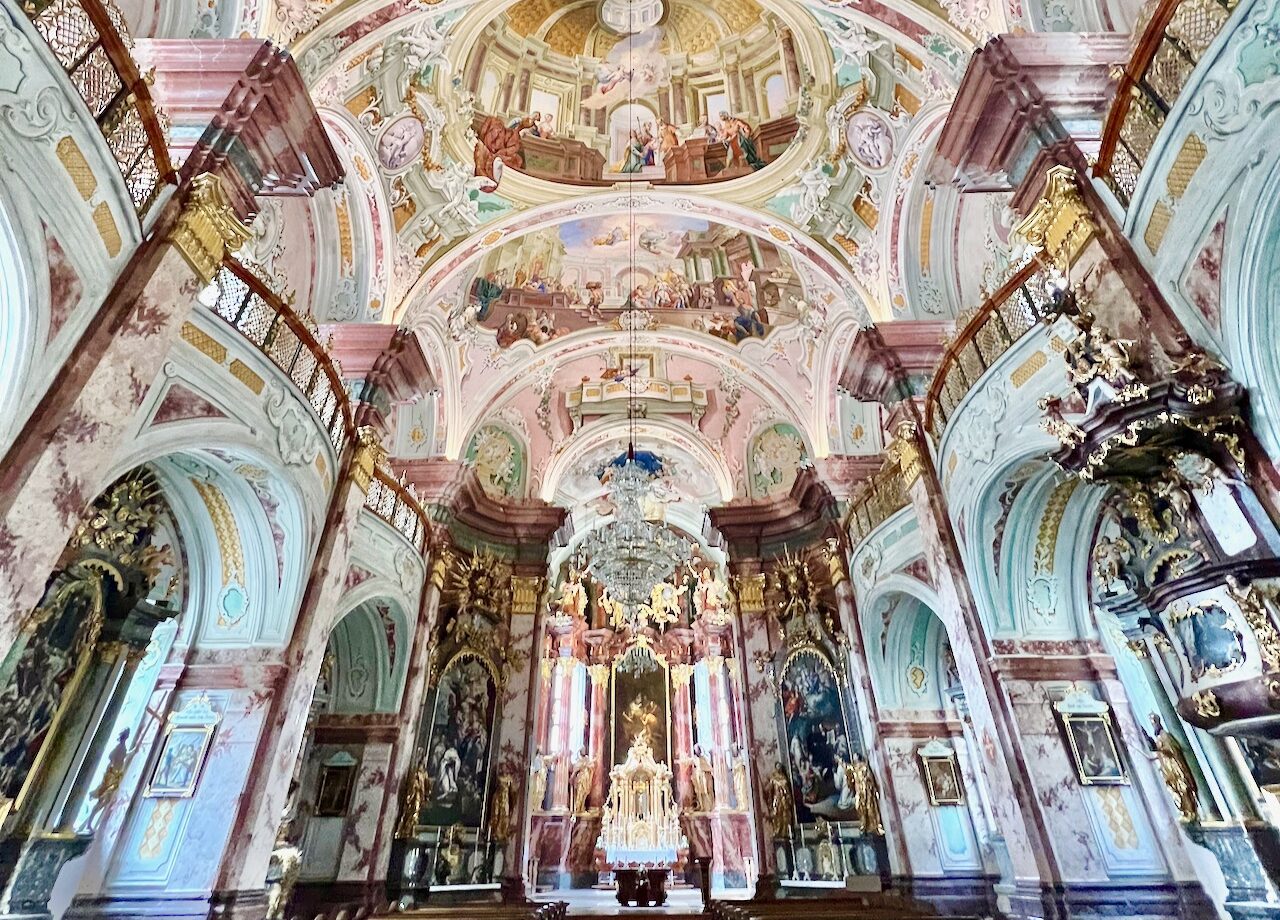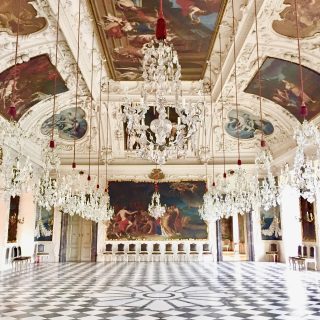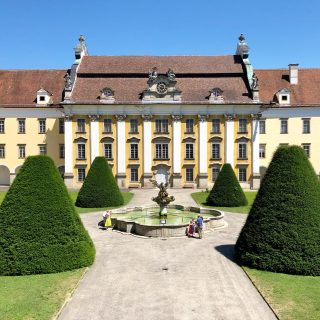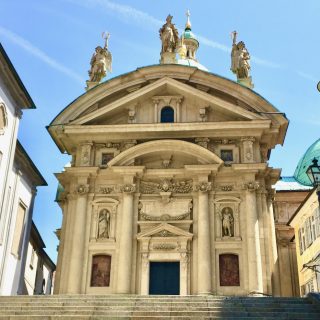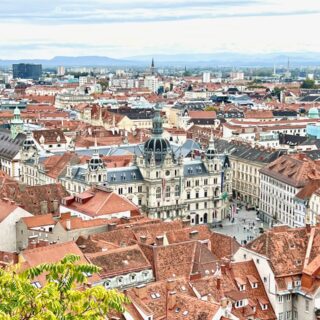Rein Abbey (Stift Rein) is a Cistercian monastery located in the hills a short drive northwest of Graz, Austria. Founded in 1129, it’s the oldest (continuously-inhabited) Cistercian monastery in the world. I’d not heard of this abbey until my recent visit to Graz. While I searched the tourism board’s website for places of interest around Graz, I saw a photo of Rein Abbey, in all its Baroque splendour. Being a fan of this architectural style, I knew right away that I should visit it. This half-day trip turned out to be an unforgettable visit to one of the most beautiful churches in Austria!
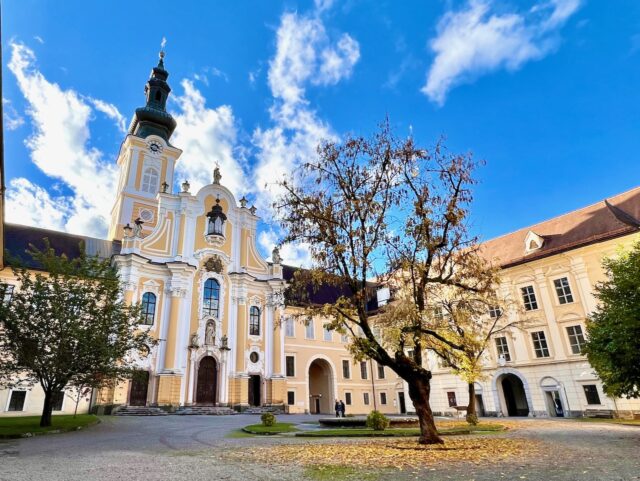
My visit to Rein Abbey
Rein Abbey is located about a 30-minute drive from Graz, or 50 minutes by public transport. Along the way, I made a quick stop at the Pilgrimage church of Maria of Strassengel (map). Cutting a stately figure atop a hill, this beautiful Gothic church features a 50-meter high tower, an impressive vaulted ceiling and exquisite stained-glass windows. In addition, there are gorgeous views of the surrounding hills and villages.
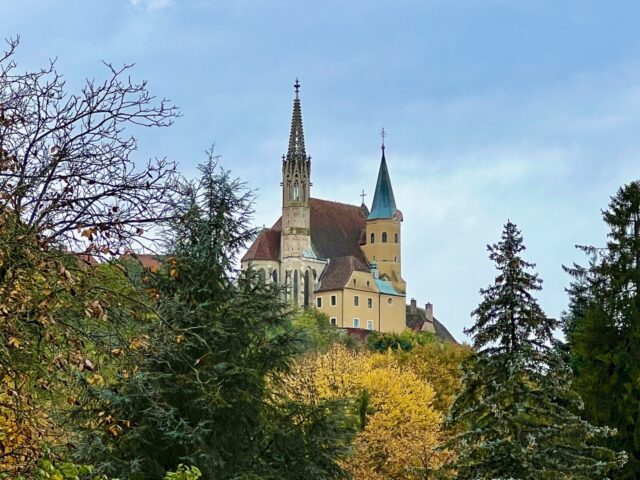
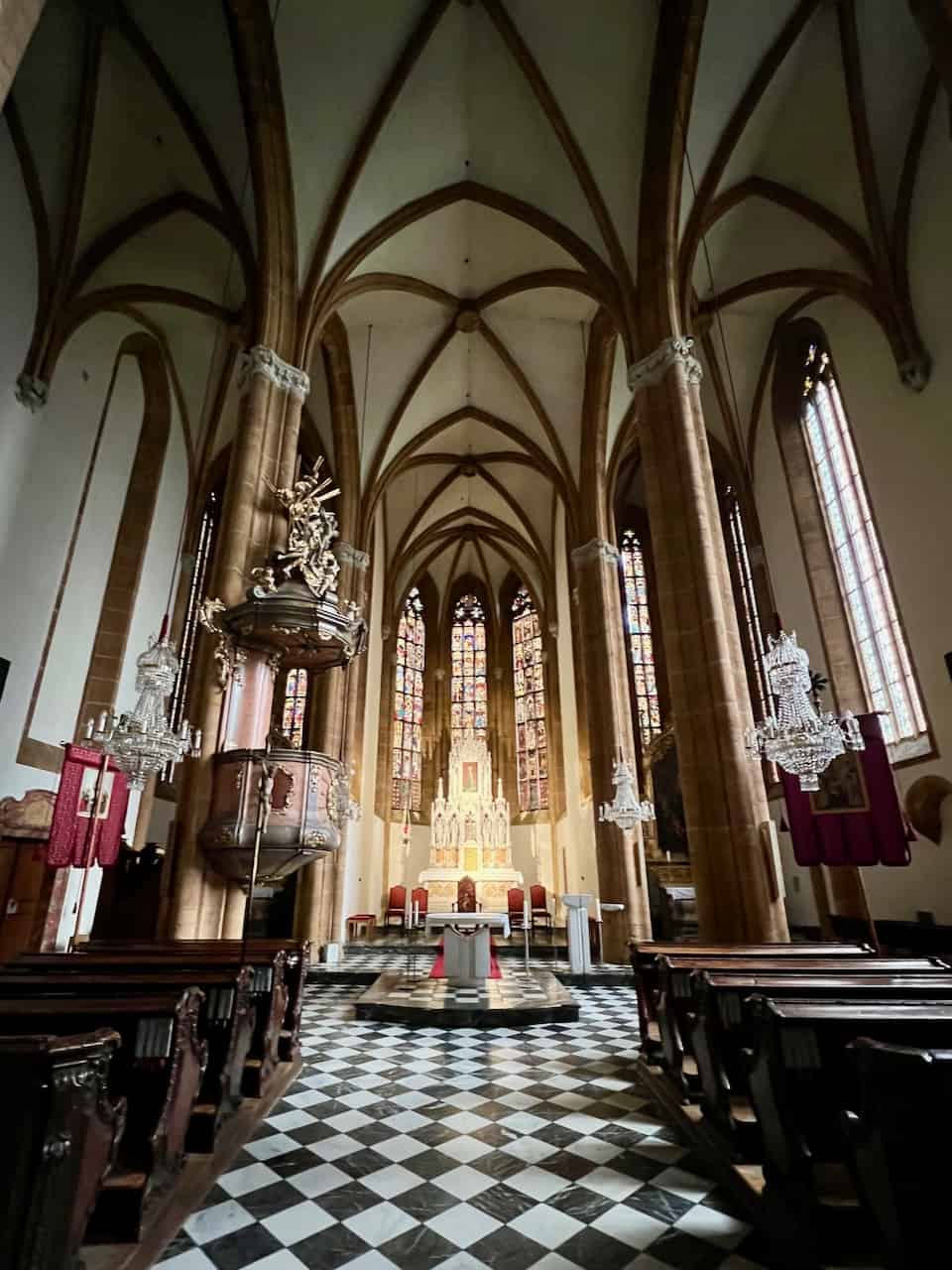
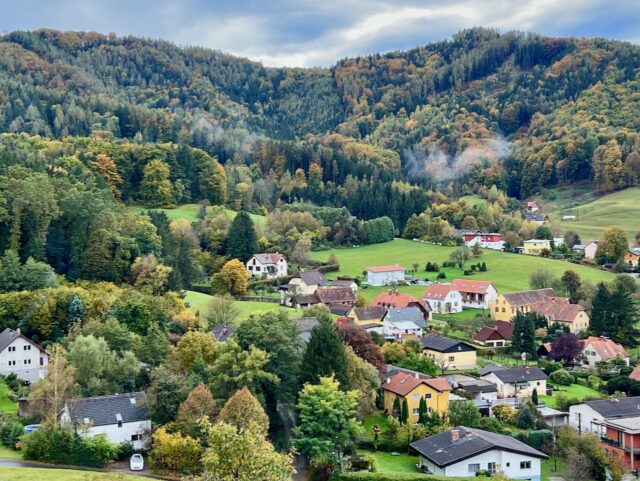
From the Pilgrimage church, I continued to Rein Abbey (map), a short drive away. As I approached it, I took a moment to admire the lovely setting in a valley with expansive fields in the foreground and backed by forest-clad hills.
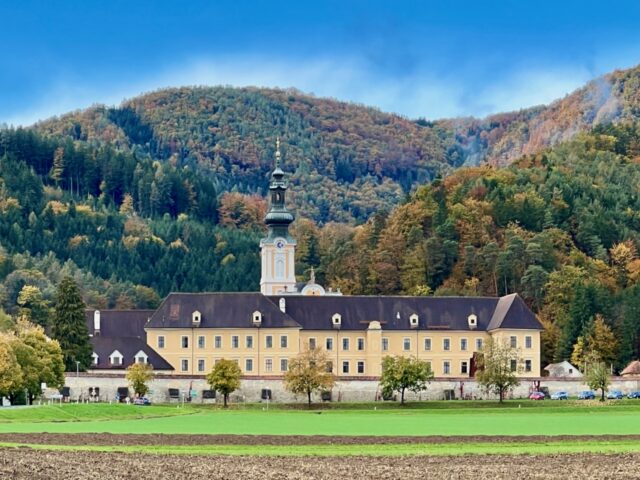
There are two tours each day at 10:30 and 13:30. I had some spare time before the start of the tour so I decided to go for a walk through the forests behind the abbey. There are numerous hiking trails that start at the abbey, making it possible to combine a visit to the abbey with a hike in the forest. I also learned of a special, 600-meter-long barefoot path that’s marked by huge footprints in the grass and crosses a meadow.
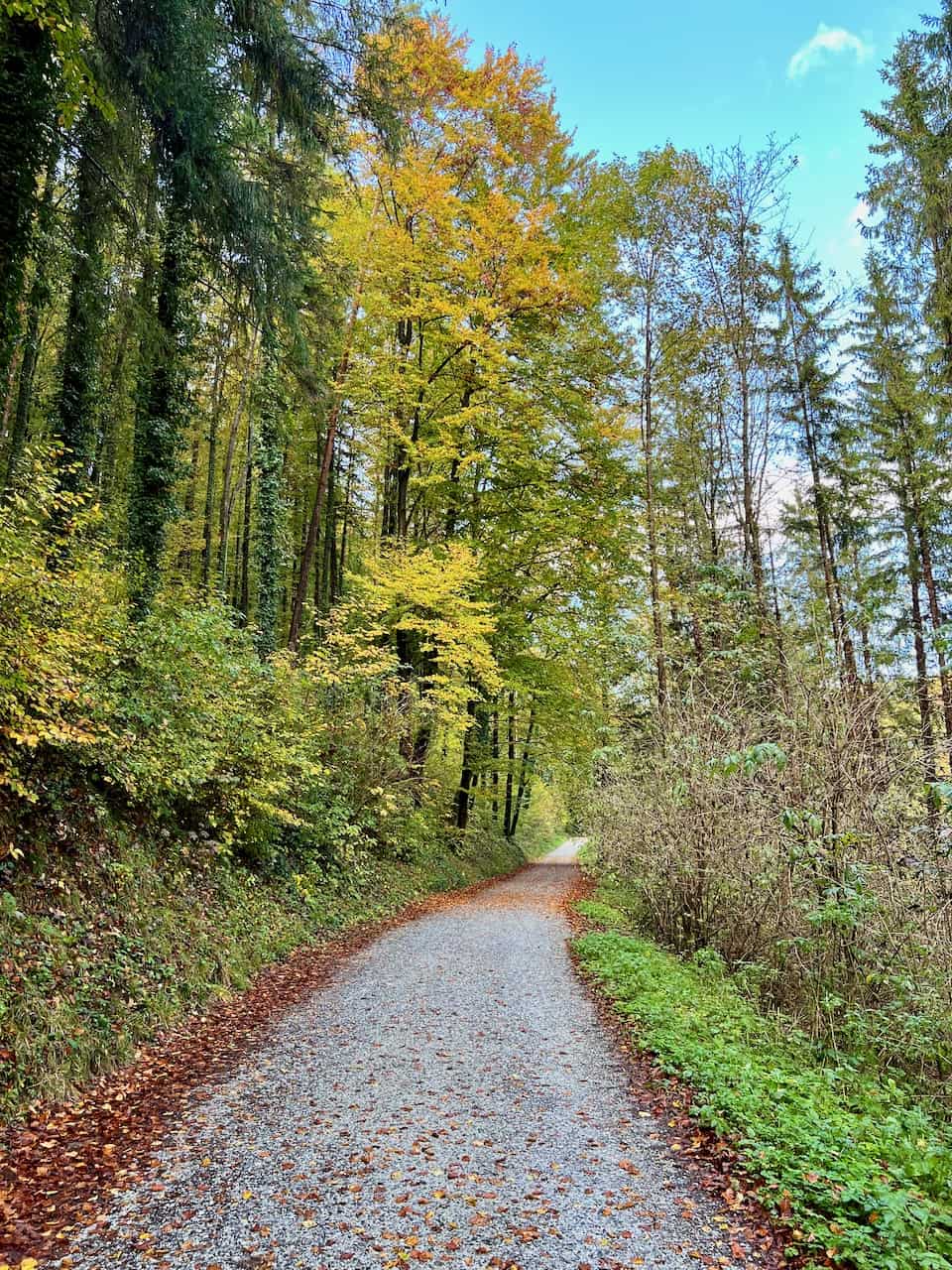
Abbey church
The tour started at the ticket office and the first stop was the central courtyard framed by the ornate façade of the abbey church. An interesting detail in the façade is the pipe organ, something I’ve never seen outside a church before.
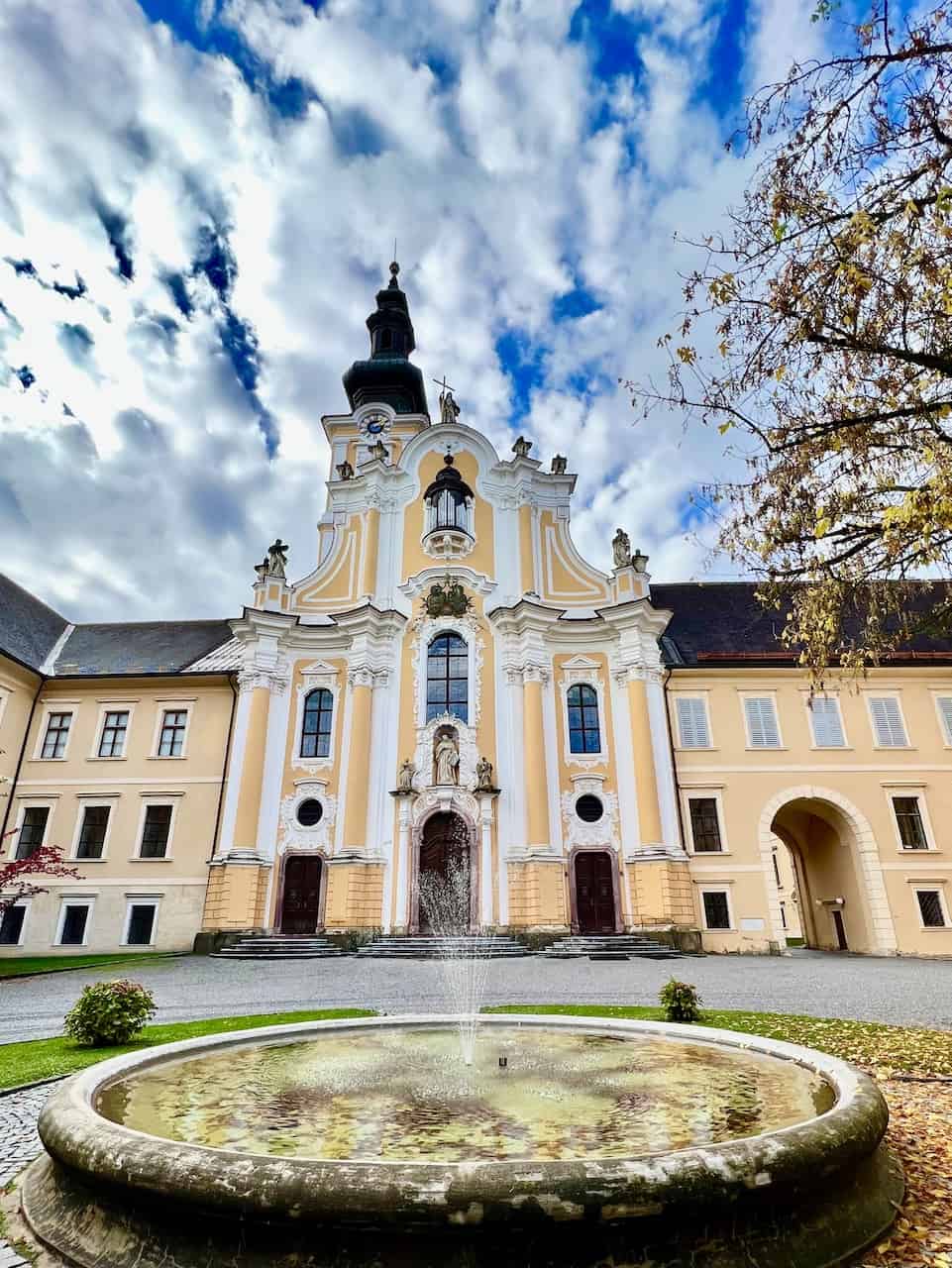
Our guide let us through the heavy doors into the church and everyone, me included, just stopped in amazement. There were several audible gasps and I don’t blame them. Right in front of us was perhaps one of the most splendorous Baroque interiors I’d ever seen!
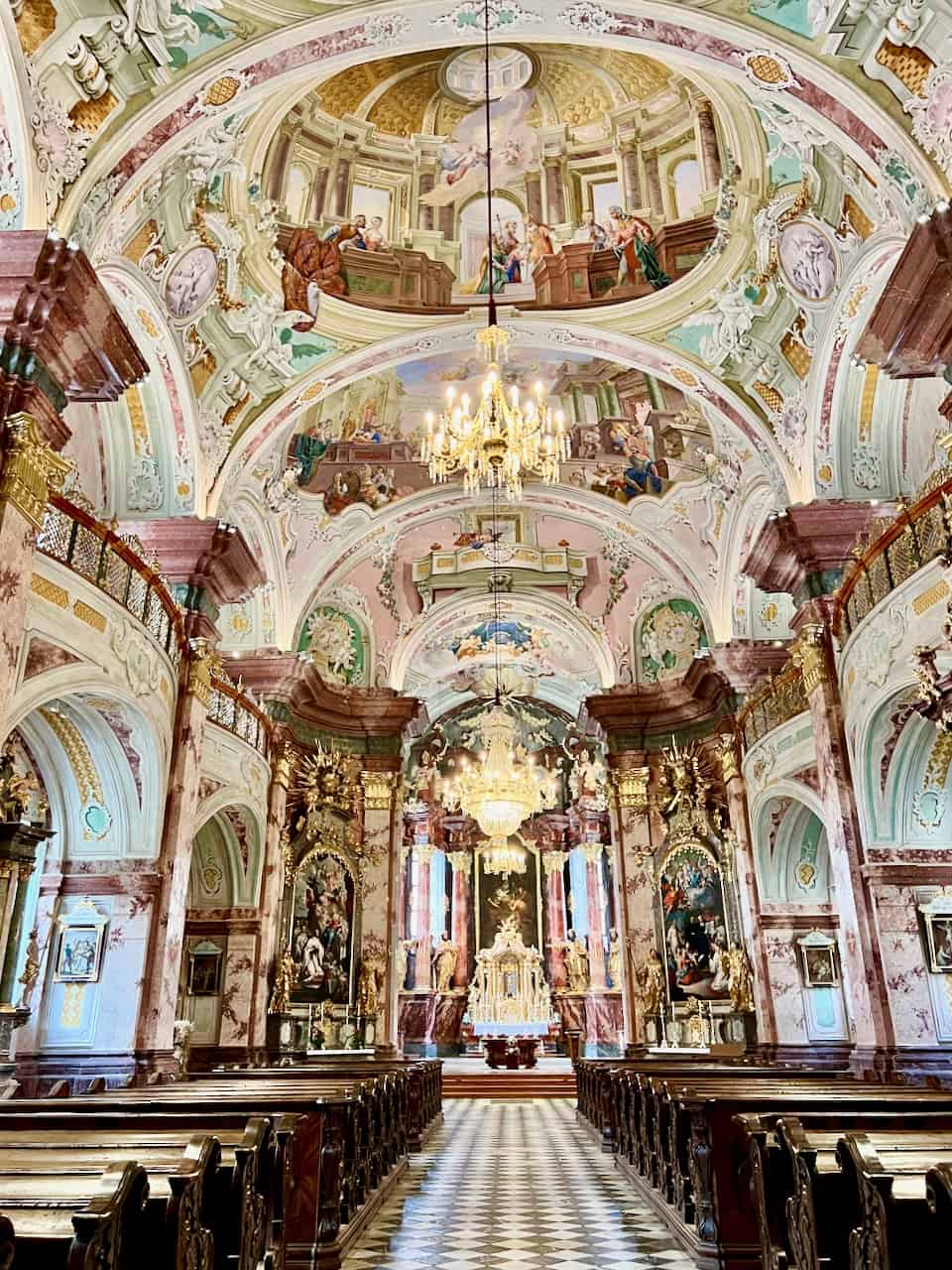
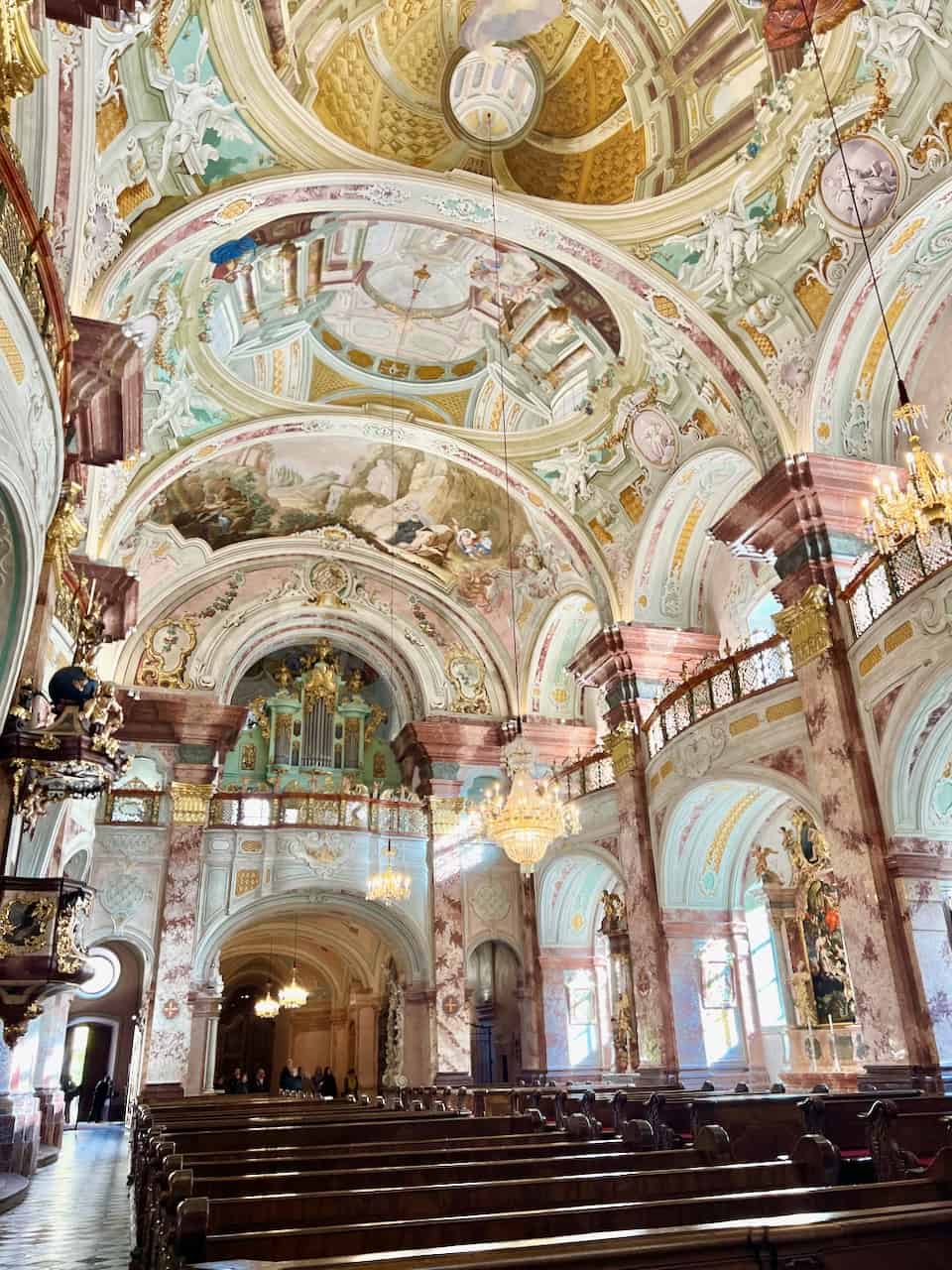
Originally built in Romanesque style in the 12th century, the abbey and its church underwent a major refurbishment in the mid-18th century. The original Romanesque and Gothic styles were replaced with Baroque, the most influential style at the time. Johann Georg Stengg, a Styrian architect and other Austrian artists were brought in to design the abbey church. Quite literally every square inch of the church’s interior was covered with elaborate paintings and embellishments! The result is simply bewildering!
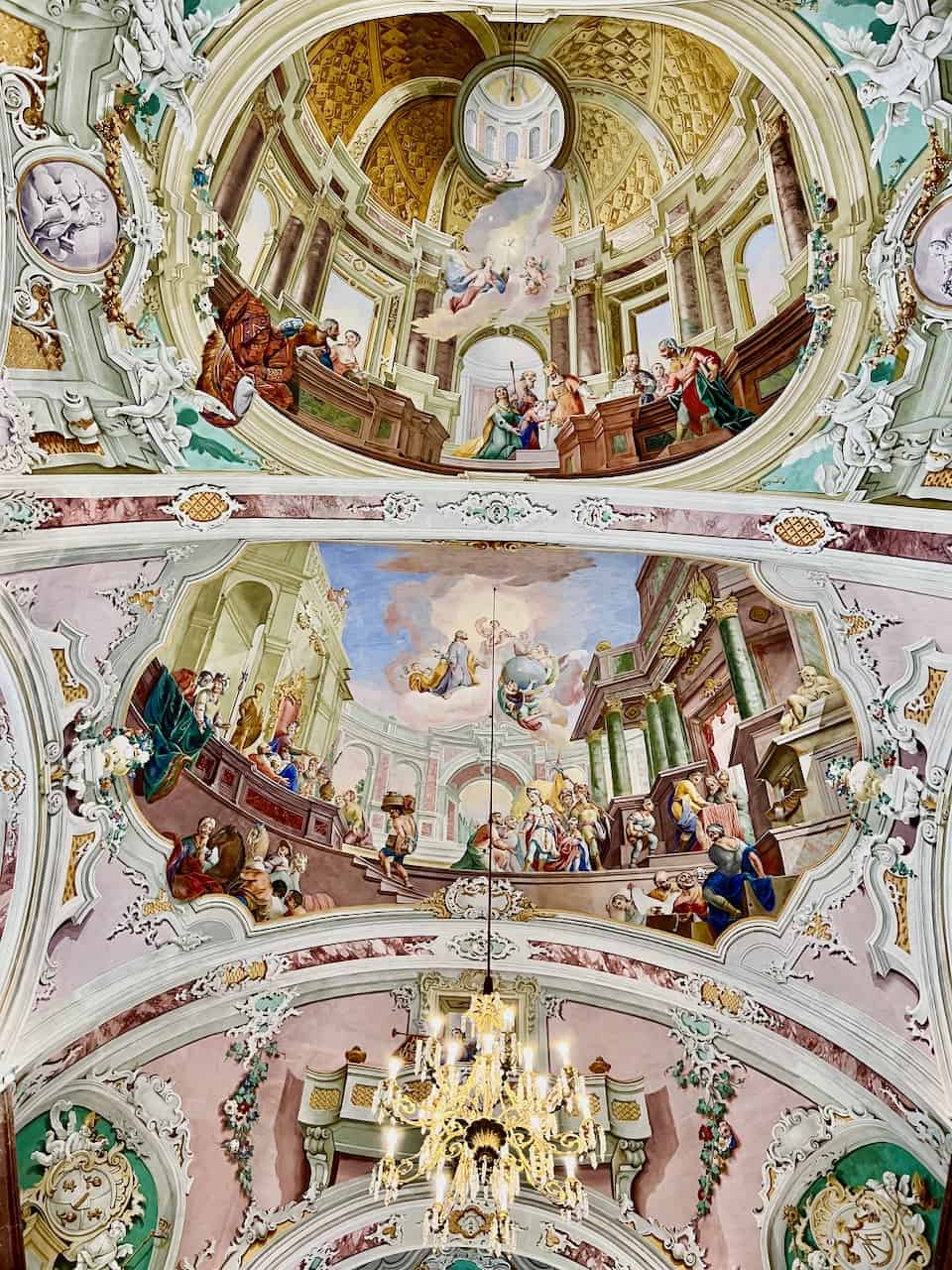
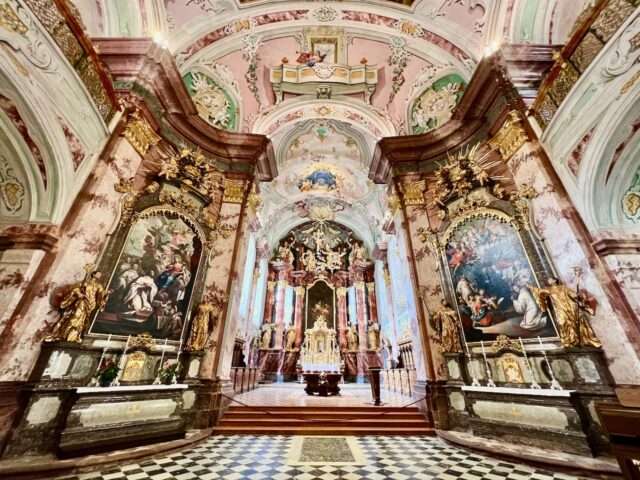
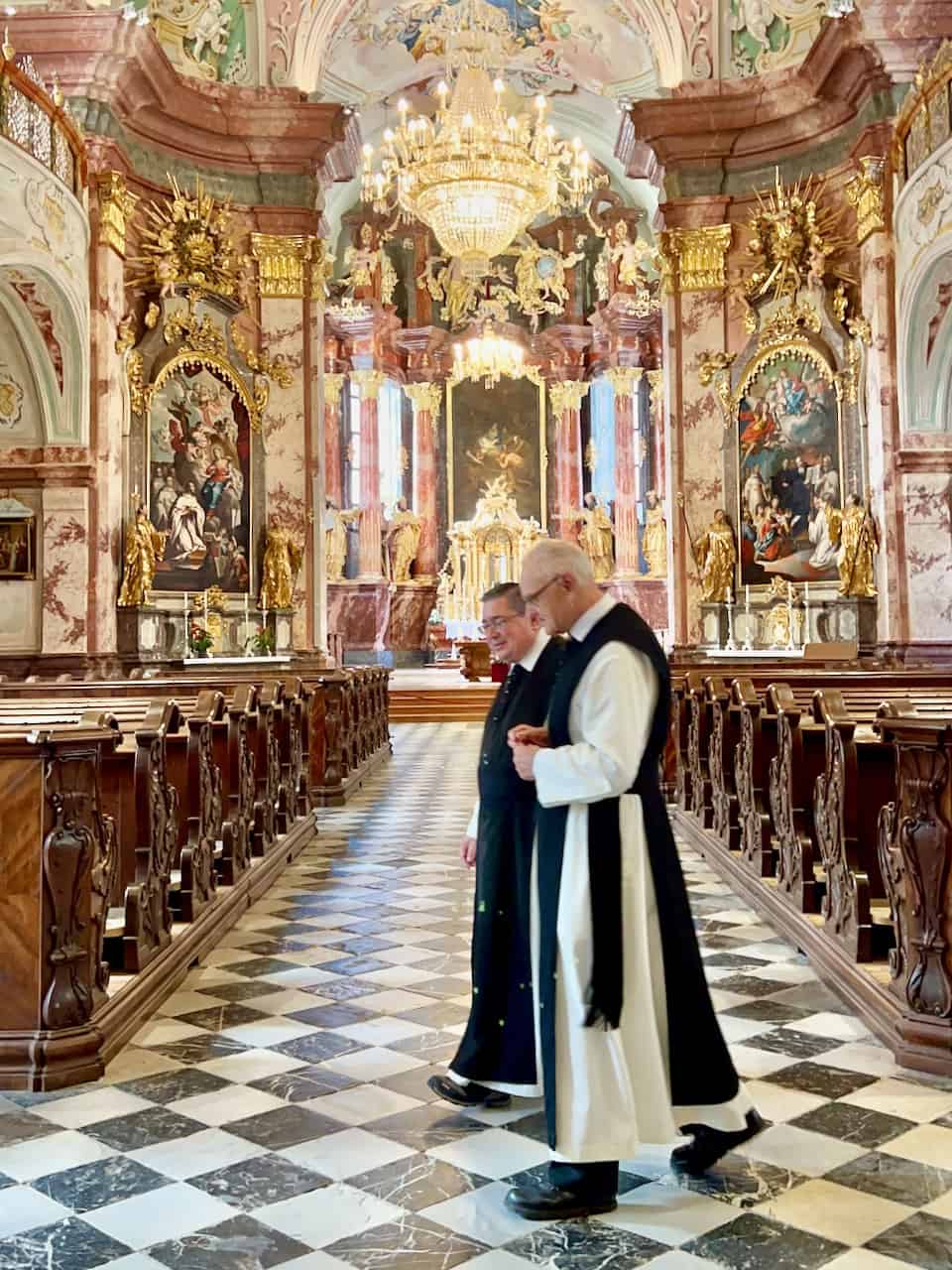
As I walked around the church, I was approached by one of the monks who introduced himself as Bernhard. Sensing my enthusiasm, he showed me other, off-limit areas of the church. I had the opportunity to see the incredible high altar up close. We also visited the tomb of Ernest the Iron. Duke Ernest was a 15th century Duke of Austria and father of Emperor Fredrick III. He’s also a descendant of England’s King Charles III.
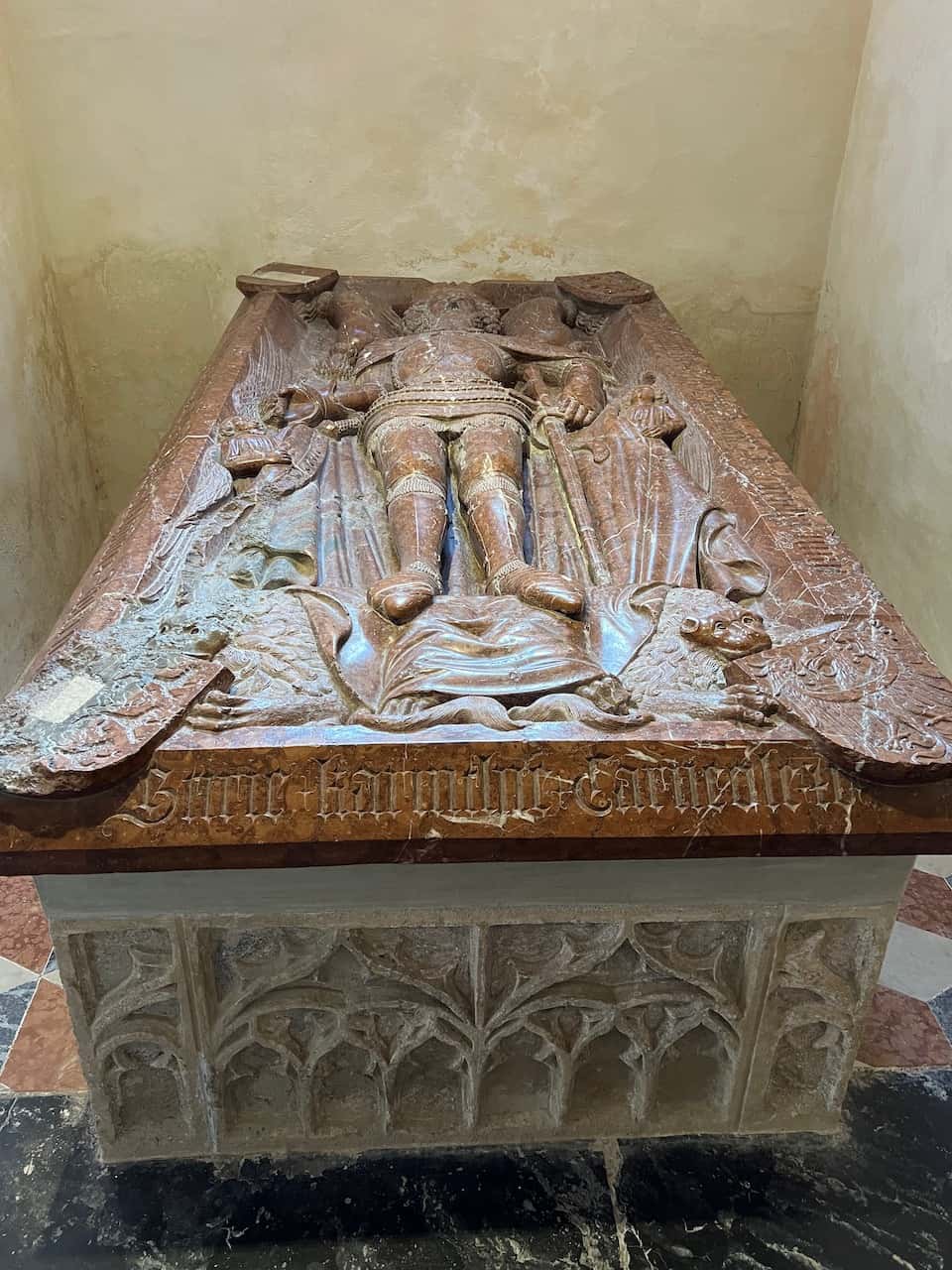
Touring the abbey
The tour continued through other parts of the abbey, including the great hallway and courtyard. Our guide pointed out remnants of the original Romanesque structure as we passed them.

In the Marian Chapel, with its cute baby angels, I got to see the remains of Margrave Leopold, the founder of the monastery. This tomb was only discovered during excavation works in 2006.
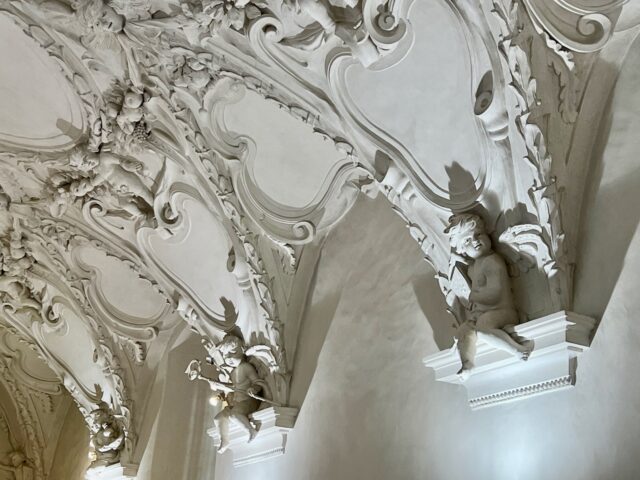
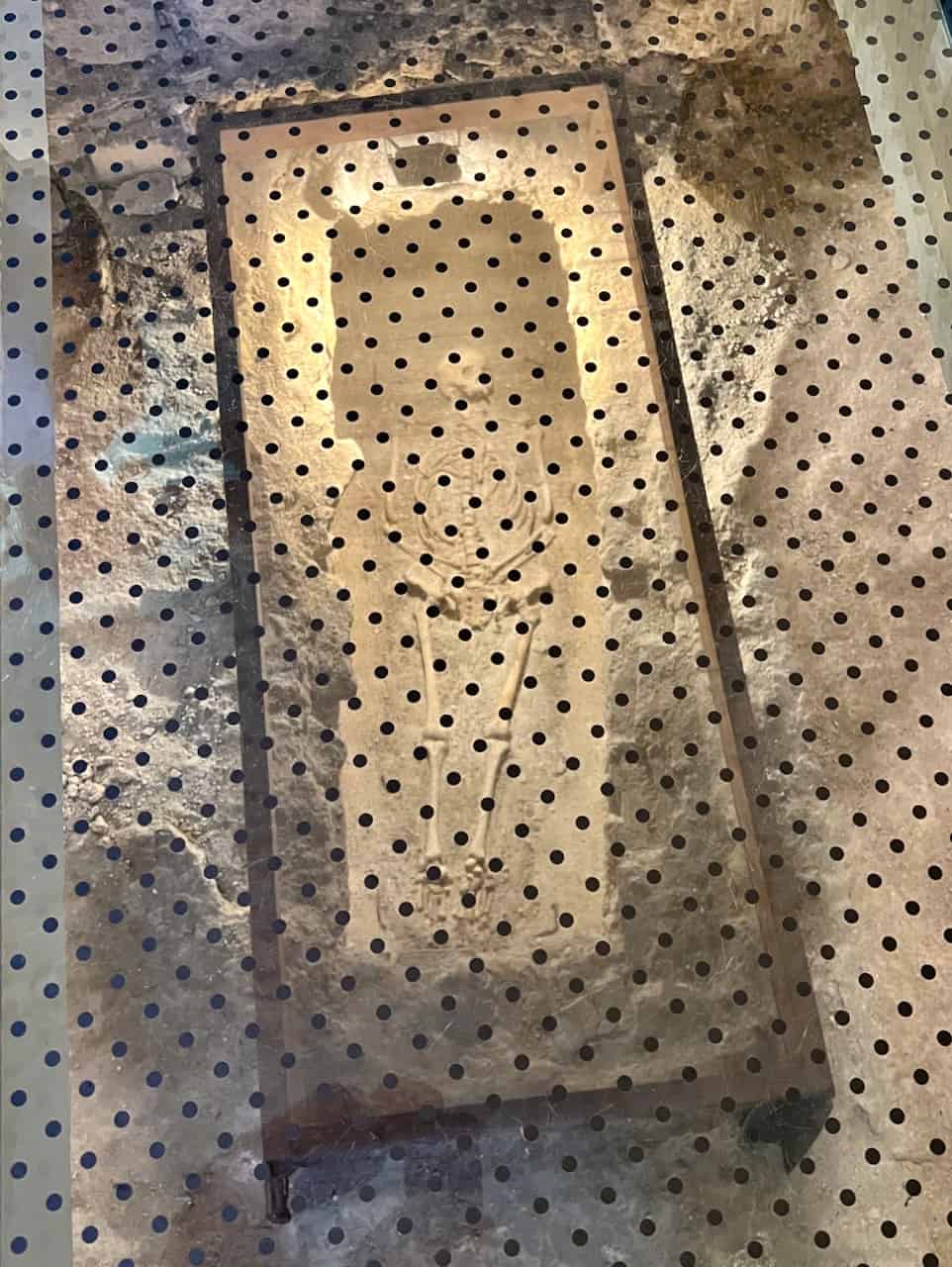
We also visited the Gothic Chapel of the Cross, part of the original structure of the abbey. The guide wowed us with stories of her search across Austria and Europe to find the original stained-glass pieces which once decorated the chapel windows.
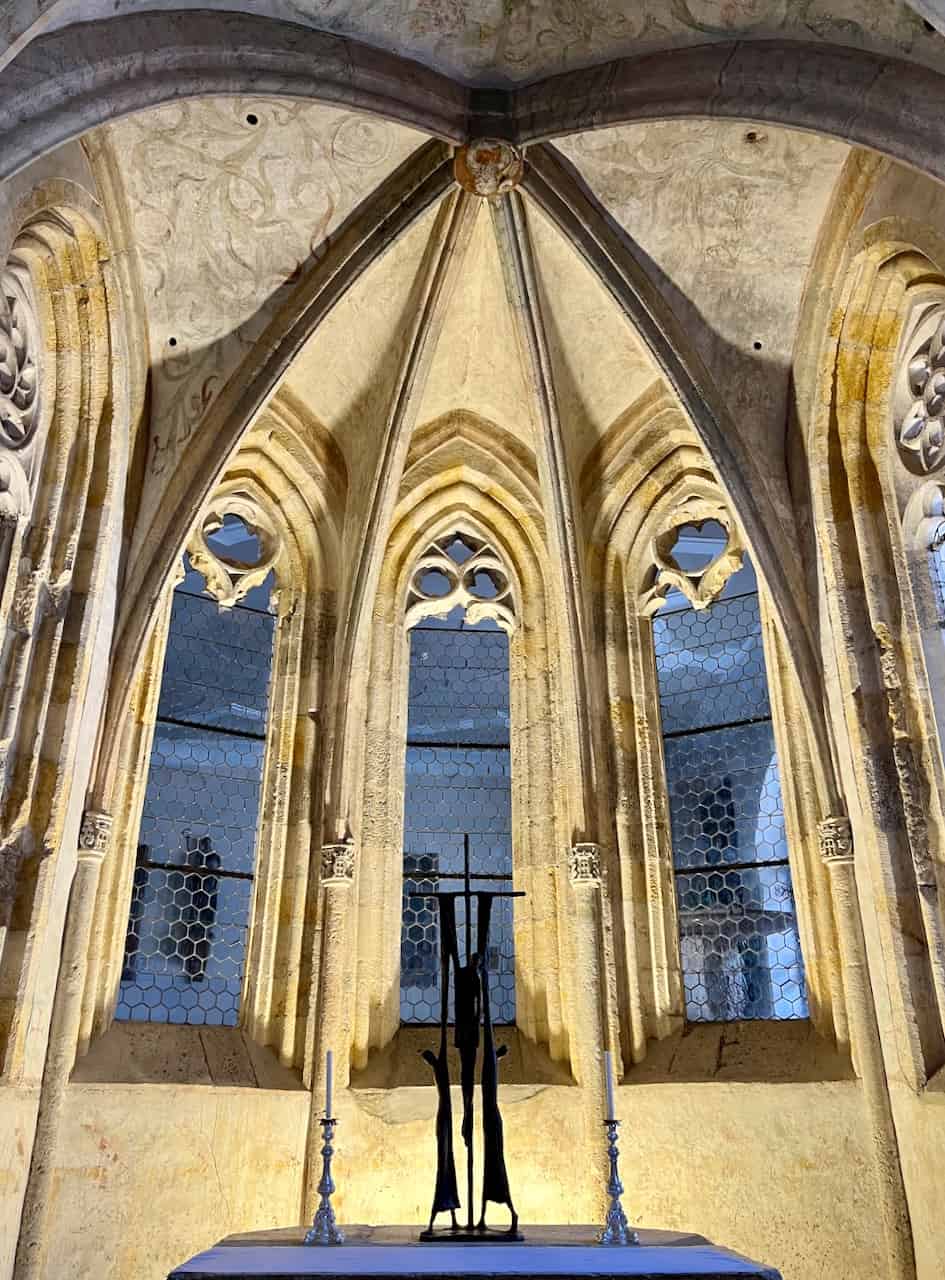
The tour also included the Library, home of 100,000 books and hundreds of medieval manuscripts.
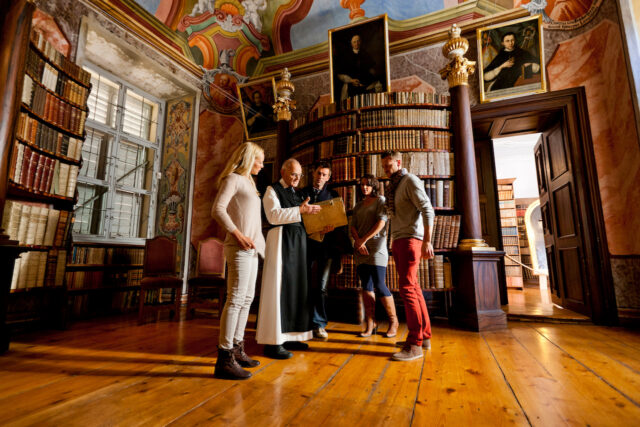
Father Bernhard had one final treat in store for me: a visit to the monks’ living quarters. The public is normally not allowed in this part of the abbey but he insisted on showing me how the monks live.
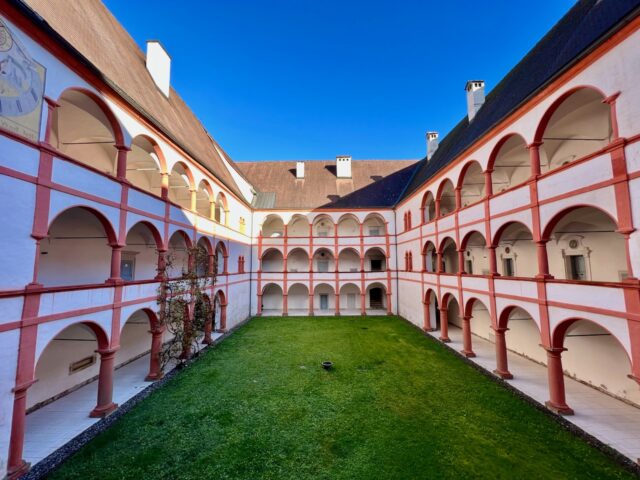
He added that it’s also possible for (male) visitors to book a room in the abbey for a short stay. Looking at the comfortable rooms and the beautiful natural surroundings, I wouldn’t mind staying there at all!
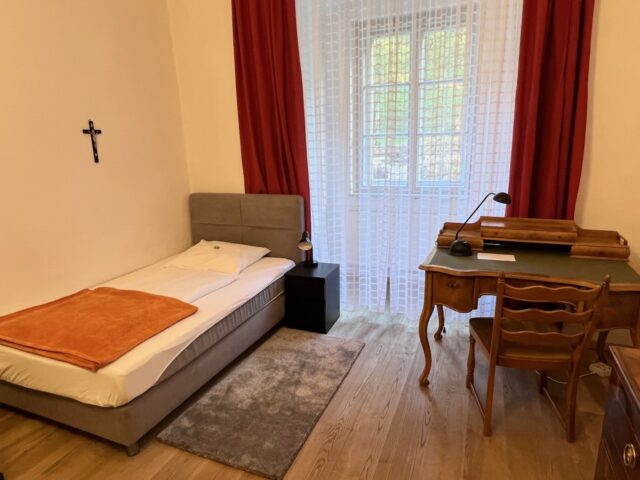
Rein Abbey is definitely worth a visit, if only to gawk at the sublime interior of the church! If you’re visiting Graz or Styria, spare some time to tour this magnificent abbey. Read more about things to do in Graz.
Visit the abbey’s website for info and tickets.
Note: my visit to Rein Abbey was organised by Graz Tourismus. All views above, are mine, and mine only.

